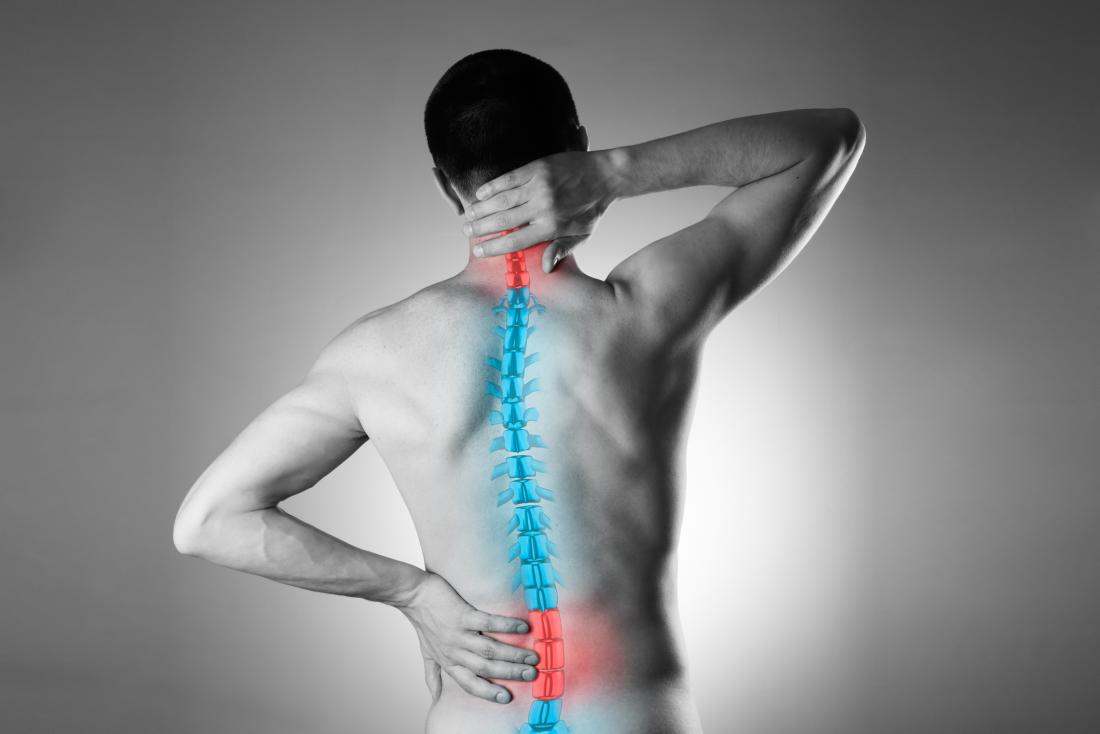
Chronic Back Pain
Share
Chronic back pain usually refers to chronic pain in the back, lumbar, lumbosacral, and sacroiliac areas, which usually lasts 12 weeks or more, and some patients may have sensory or radiating pain in the lower extremities, mostly due to spinal cord and spinal nerve root irritation, paraspinal soft tissue disease, bending and twisting, prolonged heavy physical activity, and structural abnormalities of the spine. Nearly 65 million people in the United States have back pain, and approximately 8% of adults have chronic back pain that limits them in certain daily activities. Back pain is also the sixth most expensive of all diseases, generating more than $12 billion in health care costs and indirect costs. Chronic back pain is a highly prevalent disease worldwide and is a major cause of disability, impairing the patient's mood, reducing the quality of life, limiting social activities, and placing a severe burden on the patient's physical, psychological, and social life.
According to survey statistics, about 39 percent of U.S. adults who experience pain experience back pain, the highest prevalence of any pain.
The global annual prevalence of chronic back pain ranges from 22% to 65%, with the prevalence occurring more often in middle-aged and older adults, and is higher in women than in men, with a higher prevalence in women in their 60s and men in their 40s.
The chronic lower back pain market was valued at USD 6.29 billion in 2018 and is expected to reach USD 9.27 billion by 2026, growing at a CAGR of 4.97% from 2019 to 2026.
In a survey of people with back pain, it was found that 29% cited stress as the main cause of back pain, followed by lack of exercise and engaging in physical labor.
1、Symptoms
(1)Vague pain in the lower back and lumbar region, presence of muscle spasms, hip, and pelvic pain.
(2)Dull pain: You may have bouts of pain at the end of certain activities or days and the pain persists
(3)Stabbing pain, pain may extend from the lower back to the back of the thigh and even with the calf or foot
(4)Local pressure pain or radiating pain
(5)Unfavorable movement, inconvenience, or walking difficulties
(6)Leg limb fatigue, weakness in the hips or soles of the feet
(7)Lumbar forward flexion, bending the lower back is felt as pain
(8)Back extension, the pain increases when stretching the back while sitting
(9)Scoliosis and other dysfunctions, presence of fatigue, and mild pain in the spine and chest
2、Types
According to the area of pain:
(1)Lower back pain
(2)Upper back pain
(3)Neck Pain
(4)sacrum and coccyx pain
(5)spine
According to the induced location of pain:
(1) Muscle: such as caused by muscle strain, strain, spasm, etc.
(2) Nerve: such as sciatica, spinal nerve compression, inflammation and/or injury, etc.
(3) Bone: such as osteoporosis, lumbar disc herniation, etc.
(4)Joints: such as sacroiliac arthritis, etc.
(5)Spine: such as spinal curvature, spondylitis, etc.
(6)internal organs: such as kidney stones, endometriosis, tumors and other causes of traction pain.
3、Causes and Risk factors
(1)Muscle strain or injury caused by prolonged heavy physical activity
(2)Sedentary, lack of exercise, or overweight
(3)Bad habits, such as sitting incorrectly, smoking, etc.
(4)Paraspinal soft tissue diseases, such as chronic lumbar strain, myofasciitis of the low back muscles
chronic lumbar strain
(5)Congenital diseases, such as congenital spina bifida, compulsory spondylitis, lumbar spinal sacralization, etc.
(6)Degenerative lesions of the lumbar spine, such as lumbar osteophytes, lumbar disc herniation, etc.
4、Diagnosis method
(1)Medical history. The main questions are about the patient's age, past medical history, weight change, urination, fever, etc.
(2)Physical examination. The main examination of the nervous system is to check whether the walking posture is abnormal, whether the motor function is good, etc.
(3)Imaging guidelines. X-rays are used to examine the position of the bones, primarily; MRI or CT scan mainly examines some limb areas and can presume problems such as herniated discs in the lumbar spine; EMG examines the nerves and muscles, using electrical impulses to determine the condition.
(4)Pain assessment. The doctor uses his or her hands to locate the problematic condition by touching the painful area with his or her own senses and experience.
5、Treatment method
(1) Exercise therapy. Patients need time to recover after experiencing severe pain and need to engage in as much exercise as possible during this period.
(2) Physical therapy. intermittent electric ultrasound hybrid therapy, ultrasound therapy,
acupuncture point magnetic bead patch therapy, cold or hot compresses
(3) Drug therapy. Take anti-inflammatory drugs or painkillers to relieve pain
(4) Psychotherapy. This is mainly for obese people, who almost always have back pain, but it will improve with diet control, and some anemia and depression will occur, with minor cases requiring moral support from family and friends, and severe cases requiring psychotropic medication from the doctor
(5) Surgical treatment. Removal of prolapsed discs that compress nerve tissue, spinal fusion, removal of malignant or benign tumors (e.g. osteoid osteoma).
(6) Alternative therapies. Massage, acupuncture, laser therapy, electrical nerve stimulation
(7) Dietary therapy. Eat more foods rich in high protein
6、Preventive measures
(1)Regular medical checkups and health screenings,such as walk and swim
(2)Maintain good lifestyle habits: quit smoking, adjust poor sitting and standing posture
(3)Maintain a healthy weight and healthy eating
(4)Strengthen muscles and perform appropriate exercises: perform appropriate aerobic exercises, back stretching exercises